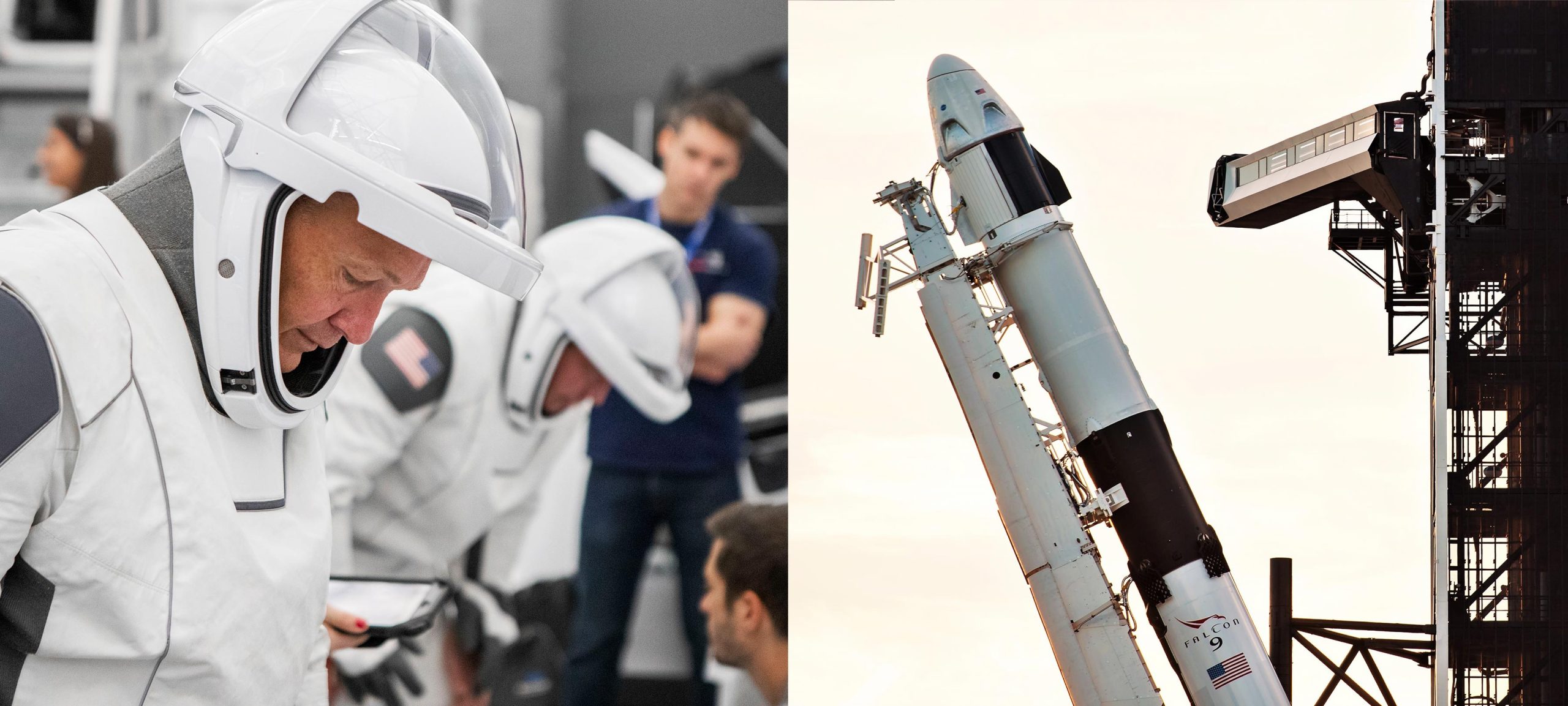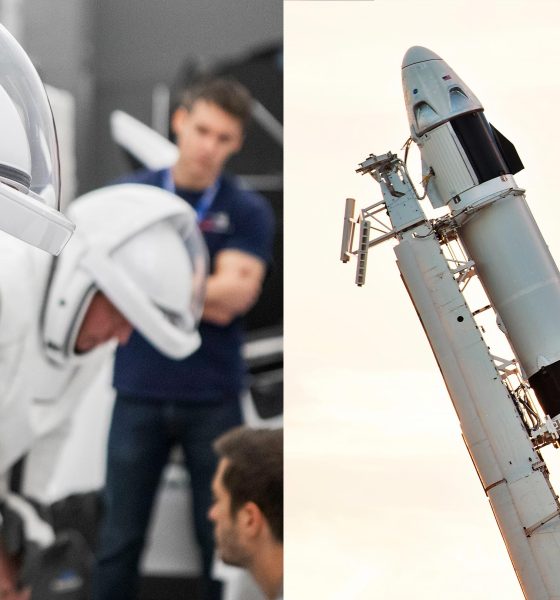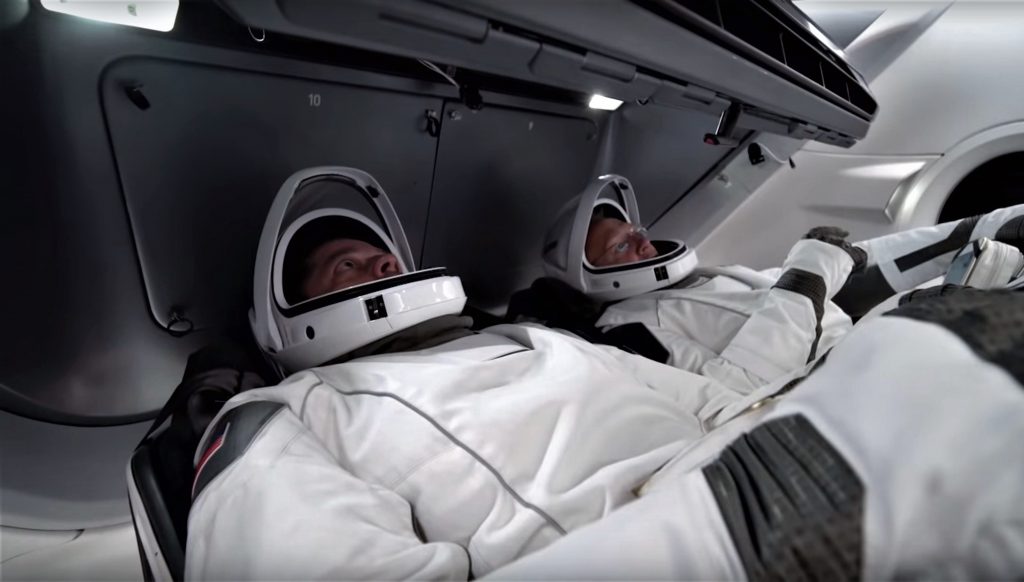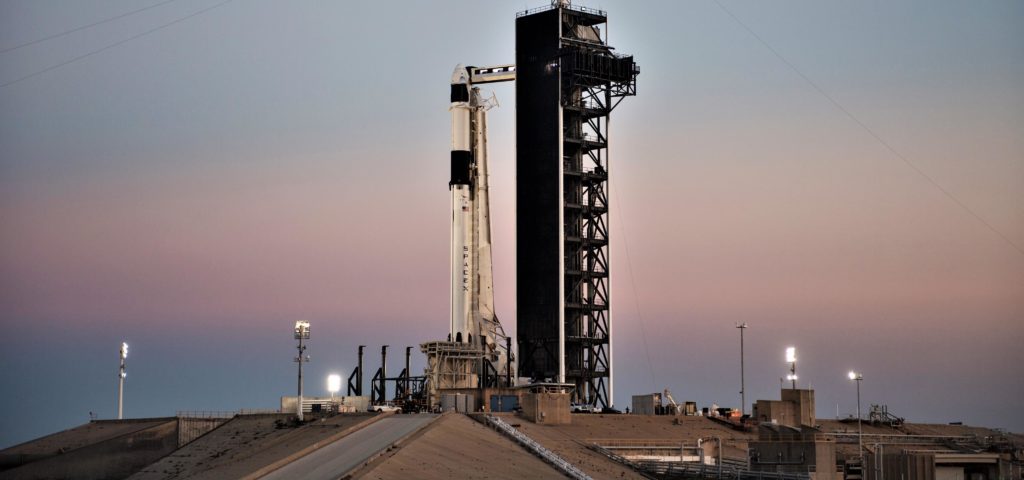

News
SpaceX’s first Crew Dragon NASA astronauts suit up for spacesuit-focused launch rehearsal
While a great deal of work remains before SpaceX and NASA are ready to set a date for Crew Dragon’s inaugural astronaut launch (Demo-2) both teams continue to actively prepare for the milestone mission.
Most recently, NASA has published photos detailing a critical (and literal) dress rehearsal with astronauts Col. Bob Behnken and Col. Doug Hurley, set to become the first astronauts to ride SpaceX’s Crew Dragon to orbit and dock with the International Space Station (ISS). This particular test centered around the process of suiting up in SpaceX’s iconic, custom-built spacesuits and simulated pre-launch procedures in a Crew Dragon simulator located at SpaceX’s Hawthorne, CA headquarters.
A literal dress rehearsal
On Thursday, an official NASA Astronaut account tweeted that SpaceX’s first two Commercial Crew astronauts had recently completed a dress rehearsal test of the spacesuits that they will wear during Crew Dragon’s inaugural crewed launch to the ISS. Bob Behnken and Doug Hurley participated in a full “suit-up & leak checks” rehearsal with their iconic SpaceX-built suits and the same Ground Support Equipment (GSE) hardware that will be used during Demo-2. This dress rehearsal also serves to familiarize the SpaceX and NASA ground support crew with the astronaut suit-up process, and multiple technicians and flight engineers are visible in the background.
The new spacesuits made their press debut last summer at a media event held at SpaceX headquarters in Hawthorne, California. Not only are they uniquely beautiful and modernist, but SpaceX’s spacesuits are also designed first and foremost with functionality in mind. SpaceX hired its own team of seamstresses and focused heavily on integrating 3D printing into suit production, resulting in an end-product that is simultaneously strikingly minimalistic and extremely usable. For example, the helmets Behnken and Hurley are seen wearing use 3D printing to integrate extremely complex life support systems, a built-in microphone and speaker communications array, a seamless multi-hinged visor, and more.


The suits are also designed to allow for easy maneuverability and a seamless user experience within the Dragon capsule. The attached gloves of the suit use conductive leather to allow the astronauts to interact with the Crew Dragon’s primary controls, a set of large touchscreens. Apple iPads will additionally be mounted directly on the thighs of the astronauts to serve as an even more convenient (and redundant) method of interfacing with Dragon’s controls, among other things.
While the suits are designed to be pressurized to support the astronauts in the event of a life-threatening event that may occur aboard Dragon, they are not meant for spacewalks or prolonged exposure to the vacuum of space.

Behnken, Hurley, and other Commercial Crew astronauts have been included in the development of their suits since day one and each flight suit has been carefully tailored to fit each future Crew Dragon astronaut. Having the opportunity to run through a launch day dress rehearsal allows everyone in the process to become familiarized with the specialized procedures that will occur ahead of boarding the Dragon capsule.
Crew Dragon sidesteps the norm
Unlike previous crewed NASA launches, SpaceX plans to have astronauts board Crew Dragon before launch vehicle fueling begins. This new approach to crew loading has become known as “Load-and-Go.” This procedure is extremely familiar to SpaceX, as the company supercools the liquid oxygen and kerosene propellant used by Falcon 9 and Heavy to significantly improve the performance of both rockets.
SpaceX has made the rational argument that boarding astronauts before fueling is actually significantly safer than the traditional method of ingressing astronauts while the rocket is fully fueled. Once inside Crew Dragon, the spacecraft’s SuperDraco abort system would be armed, theoretically protecting its astronauts from any conceivable explosion-related vehicle failure, whereas a fueled rocket failing during ingress could easily kill anyone in close proximity for the boarding procedure.

According to NASA, possible dates for Crew Dragon’s Demo-2 astronaut launch debut are under review. In a mid-July conference call with SpaceX and NASA officials, neither were particularly confident that Demo-2 would be ready to launch before the end of 2019, although they specifically did not rule the possibility out. More likely than not, Crew Dragon Demo-2 will slip into early 2020 as a result of a catastrophic explosion that destroyed Crew Dragon capsule C201 during static fire testing earlier this year.
Check out Teslarati’s Marketplace! We offer Tesla accessories, including for the Tesla Cybertruck and Tesla Model 3.

News
Elon Musk’s Grokipedia surges to 5.6M articles, almost 79% of English Wikipedia
The explosive growth marks a major milestone for the AI-powered online encyclopedia, which was launched by Elon Musk’s xAI just months ago.

Elon Musk’s Grokipedia has grown to an impressive 5,615,201 articles as of today, closing in on 79% of the English Wikipedia’s current total of 7,119,376 articles.
The explosive growth marks a major milestone for the AI-powered online encyclopedia, which was launched by Elon Musk’s xAI just months ago. Needless to say, it would only be a matter of time before Grokipedia exceeds English Wikipedia in sheer volume.
Grokipedia’s rapid growth
xAI’s vision for Grokipedia emphasizes neutrality, while Grok’s reasoning capabilities allow for fast drafting and fact-checking. When Elon Musk announced the initiative in late September 2025, he noted that Grokipedia would be an improvement to Wikipedia because it would be designed to avoid bias.
At the time, Musk noted that Grokipedia “is a necessary step towards the xAI goal of understanding the Universe.”
Grokipedia was launched in late October, and while xAI was careful to list it only as Version 0.1 at the time, the online encyclopedia immediately earned praise. Wikipedia co-founder Larry Sanger highlighted the project’s innovative approach, noting how it leverages AI to fill knowledge gaps and enable rapid updates. Netizens also observed how Grokipedia tends to present articles in a more objective manner compared to Wikipedia, which is edited by humans.
Elon Musk’s ambitious plans
With 5,615,201 total articles, Grokipedia has now grown to almost 79% of English Wikipedia’s article base. This is incredibly quick, though Grokipedia remains text-only for now. xAI, for its part, has now updated the online encyclopedia’s iteration to v0.2.
Elon Musk has shared bold ideas for Grokipedia, including sending a record of the entire knowledge base to space as part of xAI’s mission to preserve and expand human understanding. At some point, Musk stated that Grokipedia will be renamed to Encyclopedia Galactica, and it will be sent to the cosmos.
“When Grokipedia is good enough (long way to go), we will change the name to Encyclopedia Galactica. It will be an open source distillation of all knowledge, including audio, images and video. Join xAI to help build the sci-fi version of the Library of Alexandria!” Musk wrote, adding in a later post that “Copies will be etched in stone and sent to the Moon, Mars and beyond. This time, it will not be lost.”
News
Tesla Model 3 becomes Netherlands’ best-selling used EV in 2025
More than one in ten second-hand electric cars sold in the country last year was a Tesla Model 3.

The Tesla Model 3 became the most popular used electric car in the Netherlands in 2025, cementing its dominance well beyond the country’s new-car market.
After years at the top of Dutch EV sales charts, the Model 3 now leads the country’s second-hand EV market by a wide margin, as record used-car purchases pushed electric vehicles further into the mainstream.
Model 3 takes a commanding lead
The Netherlands recorded more than 2.1 million used car sales last year, the highest level on record. Of those, roughly 4.8%, or about 102,000 vehicles, were electric. Within that growing segment, the Tesla Model 3 stood far ahead of its competitors.
In 2025 alone, 11,338 used Model 3s changed hands, giving the car an 11.1% share of the country’s entire used EV market. That means more than one in ten second-hand electric cars sold in the country last year was a Tesla Model 3, Auto Week Netherlands reported. The scale of its lead is striking: the gap between the Model 3 and the second-place finisher, the Volkswagen ID3, is more than 6,700 vehicles.
Rivals trail as residual values shape rankings
The Volkswagen ID.3 ranked a distant second, with 4,595 used units sold and a 4.5% market share. Close behind was the Audi e-tron, which placed third with 4,236 registrations. As noted by Auto Week Netherlands, relatively low residual values likely boosted the e-tron’s appeal in the used market, despite its higher original price.
Other strong performers included the Kia Niro, the Tesla Model Y, and the Hyundai Kona, highlighting continued demand for compact and midsize electric vehicles with proven range and reliability. No other model, however, came close to matching the Model 3’s scale or market presence.
News
Tesla Model Y Standard Long Range RWD launches in Europe
The update was announced by Tesla Europe & Middle East in a post on its official social media account on X.

Tesla has expanded the Model Y lineup in Europe with the introduction of the Standard Long Range RWD variant, which offers an impressive 657 km of WLTP range.
The update was announced by Tesla Europe & Middle East in a post on its official social media account on X.
Model Y Standard Long Range RWD Details
Tesla Europe & Middle East highlighted some of the Model Y Standard Long Range RWD’s most notable specs, from its 657 km of WLTP range to its 2,118 liters of cargo volume. More importantly, Tesla also noted that the newly released variant only consumes 12.7 kWh per 100 km, making it the most efficient Model Y to date.
The Model Y Standard provides a lower entry point for consumers who wish to enter the Tesla ecosystem at the lowest possible price. While the Model 3 Standard is still more affordable, some consumers might prefer the Model Y Standard due to its larger size and crossover form factor. The fact that the Model Y Standard is equipped with Tesla’s AI4 computer also makes it ready for FSD’s eventual rollout to the region.
Top Gear’s Model Y Standard review
Top Gear‘s recent review of the Tesla Model Y Standard highlighted some of the vehicle’s most notable features, such as its impressive real-world range, stellar infotainment system, and spacious interior. As per the publication, the Model Y Standard still retains a lot of what makes Tesla’s vehicles well-rounded, even if it’s been equipped with a simplified interior.
Top Gear compared the Model Y Standard to its rivals in the same segment. “The introduction of the Standard trim brings the Model Y in line with the entry price of most of its closest competition. In fact, it’s actually cheaper than a Peugeot e-3008 and costs £5k less than an entry-level Audi Q4 e-tron. It also makes the Ford Mustang Mach-E look a little short with its higher entry price and worse range,” the publication wrote.








